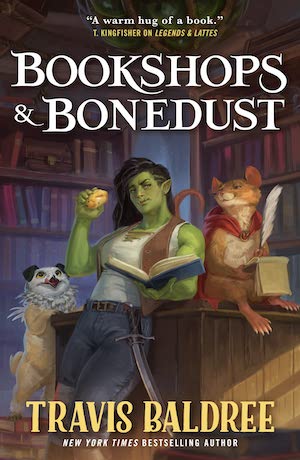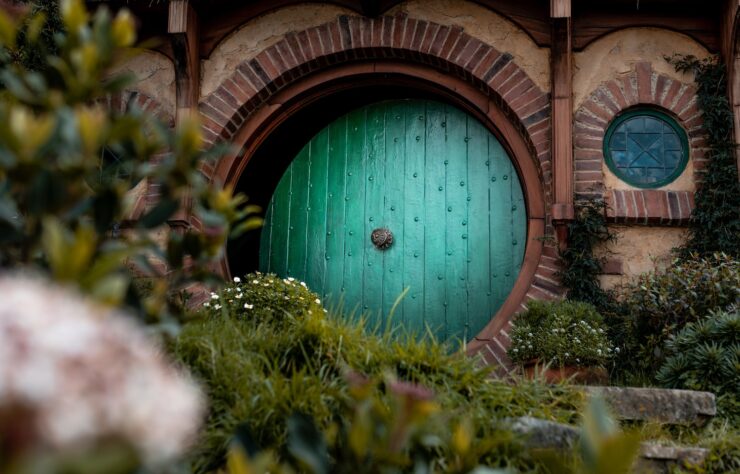“In a hole in the ground there lived a hobbit. Not a nasty, dirty, wet hole, filled with the ends of worms and an oozy smell, nor yet a dry, bare, sandy hole with nothing in it to sit down on or to eat: it was a hobbit-hole, and that means comfort.”
How many of us can recite this line from memory? I admit, I get tripped up in the details, but the first sentence is gold, and the image it conjures up is even better. For me, it’s one part Peter Jackson, one part Rankin/Bass, one part the way I imagined a hobbit-hole before I’d seen any movies. Tidy. Cozy. Warm. Wood-lined. Part of a tree, part of the earth, close to all the things I cared so fiercely about when I was a small kid hearing The Hobbit read aloud for the first time.
I have been reading a book about a house—of course, a book about a house is never just a book about a house—and it has left me feeling a little scraped and raw. It’s the kind of book that starts out feeling like a rollicking adventure and then burns away layers until you remember that every house has seen (or will see) things good and bad, seen life and death and the little moments and the large. Fictional houses can seem like havens because we only get to spend a little bit of time with them. But that time, however brief, can be hugely influential.
For me, it didn’t start with hobbit-holes. It started with The Wind in the Willows—specifically, the edition illustrated by Michael Hague, in which everything is rich and saturated and looks as welcoming and comfortable as a well-worn velvet sofa. I haven’t even seen a copy of this book in years and I can still see Mole and Badger and Rat and the rest; I am still shocked that I have not yet cross-stitched the words “Believe me, my young friend, there is nothing—absolutely nothing—half so much worth doing as simply messing about in boats” and hung them on the wall. (Do I regularly mess about in boats? No. Did I when I was small? Yes, whenever given the opportunity.)
The warrens and homes of The Wind in the Willows were cluttered, but perfectly so. Things had places they were meant to go. Wood furniture, things hanging from the rafters, large tables and roaring fireplaces—put them all in my house.
(Some may have loved Toad Hall more, but to a kid, it was the place you’d be nervous about breaking something. No, it’s a den for me.)
And a den is very like a hobbit-hole, in some ways. Cozy, warm, practical, built for meals and guests. When I got a little older, though, I discovered the other place in Middle-earth that I desperately wanted to live: Lothlórien. Living in the trees! I had never even heard of Swiss Family Robinson, yet was obsessed with treehouses, with the idea of being up, up, up among the secret branches, the ones that in normal trees were too flimsy to hold much weight. Magic trees were clearly different.
But the logistics didn’t really matter. It was just the idea of this golden magical wood that somehow, wise and clever like the elves, had everything a person could need. I imagined it sort of like the forest in my childhood copy of The Twelve Dancing Princesses, all golden and beautifully impractical. I never got around to imagining the elves’ actual homes. Just the trees. Trees that were home—no matter how distant Middle-earth seemed, that I understood.
In elementary and middle school, I encountered a lot of houses that were both basic and beyond my understanding. My idea of New York City was a mash-up of contrasts: the apartments of All-of-a-Kind Family (five sisters in one room!); the expansive, incredible museum in From the Mixed-Up Files of Mrs. Basil E. Frankweiler; the magical New York in So You Want to Be a Wizard. I loved The Westing Game and had absolutely no idea how to imagine an “apartment house.” I knew it was on a lake, but I had no idea how big a lake could be. I imagined a sort of tower that was also a house, a hotel that had house-like characteristics. I can still almost see how wrong I was.
And then there was the concept of the beach house. Some of you may have met this concept in a normal sort of way: by being in one. I discovered it in William Sleator’s Interstellar Pig, in which a kid on vacation at the beach meets some very interesting neighbors who are playing an even more intriguing board game.
Beach houses—the real things—never lived up to my youthful imaginings.
Fantasy is full of homes that a reader may or may not imagine as the author saw them. The house in The Forgotten Beasts of Eld, which I envisioned full of libraries and animals, a mountain house that was isolated but comforting, cozy and stern at once. The weyrs of Anne McCaffreys’ dragonriders—how did we picture those? What did they look like? Why does my brain hold onto a single image of a hallway from a Melanie Rawn book when I can’t remember which book, or why that location might be important?
Buy the Book


Bookshops and Bonedust
Somewhere in all of our heads is a feat of utterly impossible architecture, all of these places connected, like an M.C. Escher drawing of towers and forests and clean stone walls.
Where I wanted to live as a teen, though, was slightly simpler: a house that was a cross between the Addams Family house and something you’d find in an Edward Gorey drawing. There is no other explanation for how old Victorians and their ilk danced into my head and settled there. They are not hobbit-holes (though you could make one just as cozy). They are not tree-forts or railroad apartments. But they are still my brain’s highest idea of a perfect house—at least of the kind a person can have.
(Of the magic kind, there is nothing better than Howl’s castle.)
There’s probably a lineup of houses in your head, too. They aren’t always easy to access; I had to think more than I expected about where I had found all my ideas about home and comfort and an ideal use of space. (And this is only what lodged in my psyche early; there’s a whole other list of houses and castles and dens from my more recent years of reading.)
Like so many other things in books, these concepts seep in when you aren’t looking for them. A book is a story about how even the smallest of us can have important roles to play, but it’s also a story about what matters to different people and where they feel safe. How to live comfortably, and how that can mean so many different things. (Let us not forget the raft people of Earthsea!) Some want to be close to the earth. Some want to peer into the distance from the tops of trees. And some make mountain homes far up in the cold north that are still the warmest places of all. What we read shapes how we see the world, what leaps out and what fades back—and colors how we want to live in it.
What does your magical architecture look like?
Originally published September 2022
Molly Templeton lives and writes in Oregon, and spends as much time as possible in the woods. Sometimes she talks about books on Twitter.










